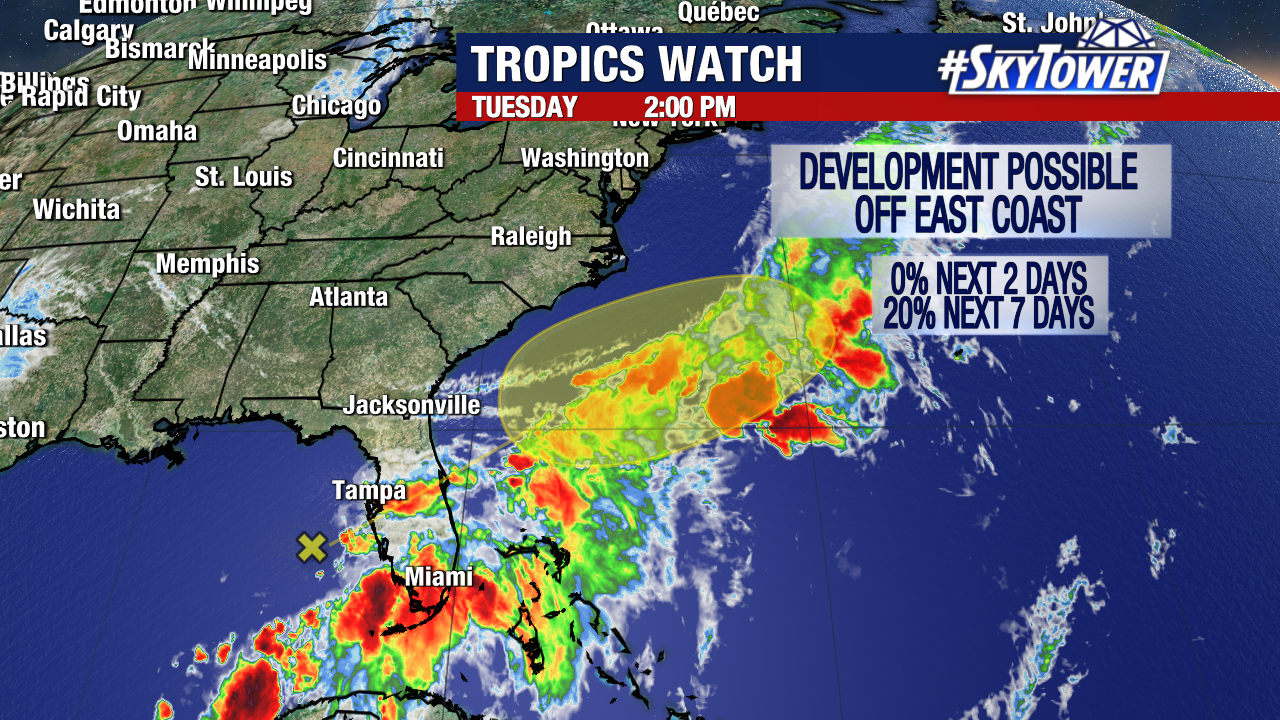
A tropical disturbance is currently moving towards Florida and the southeastern Atlantic, bringing heavy rainfall to the state. The National Hurricane Center (NHC) is monitoring the system for potential development. Regardless of development, heavy rain capable of producing flash flooding is expected across portions of Florida over the next few days.
The NHC reported that a large area of disorganized showers and thunderstorms is being produced by a broad area of low pressure in the Gulf of Mexico. The system is expected to move northeastward across Florida during the next day or so and move offshore of the U.S. Southeast coast later this week.
Environmental conditions are generally unfavorable for development, but some slow development is possible when the system is offshore of the U.S. Southeast coast.
The heavy rainfall will bring significant rain totals to Florida, with some areas potentially receiving a month's worth of rain within a few days. Flood watches are in effect for over 6 million people in southern Florida, and double-digit rainfall totals are likely by Friday.
Heavy rain events have been getting heavier due to fossil fuel pollution and tropical moisture streaming in from the Caribbean. The daily downpours will be beneficial at first as half of Florida is experiencing abnormal dryness or drought conditions, but they may lead to flash flooding, especially in urban or poor-drainage areas.
The bulk of the heaviest rain will fall from Tuesday through Thursday night. The southwestern Gulf Coast of the state, from Sarasota to Everglades National Park, is at the greatest risk for rainfall totalling 10 inches or more. However, bursts of intense rain outside of this highest risk area could also cause flash flooding.
The Central American gyre, a large disorganized area of showers and thunderstorms that rotates over Central America and its surrounding waters, is fueling the heavy rainfall in Florida. The gyre typically develops around late spring and early summer, making it a sign that the rainy season is about to begin.







